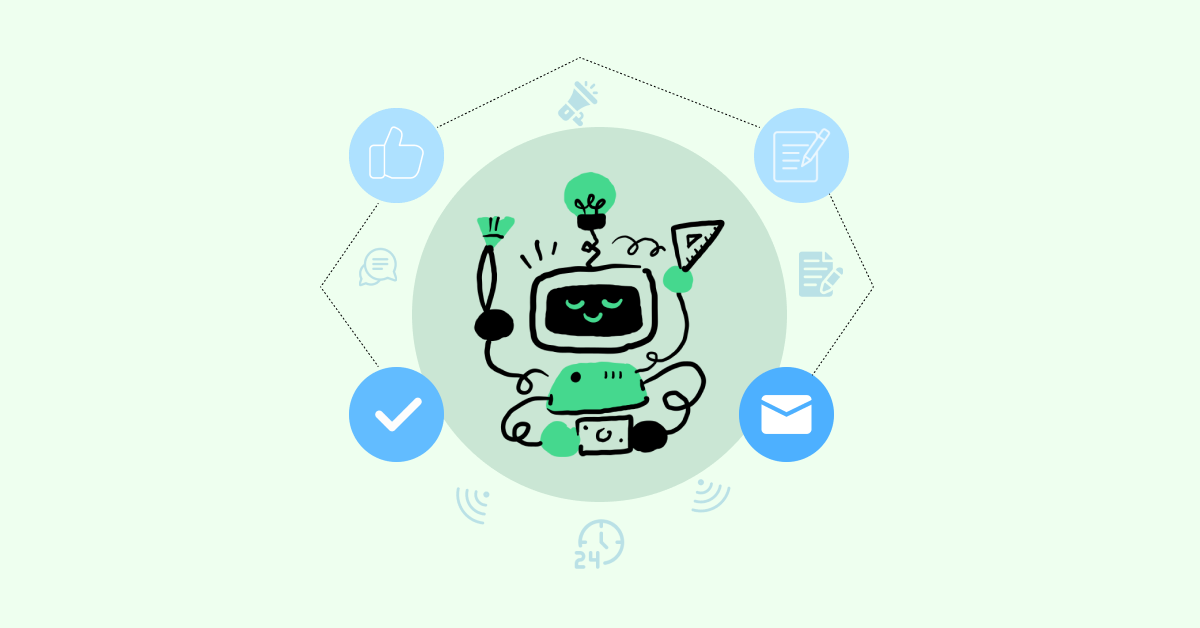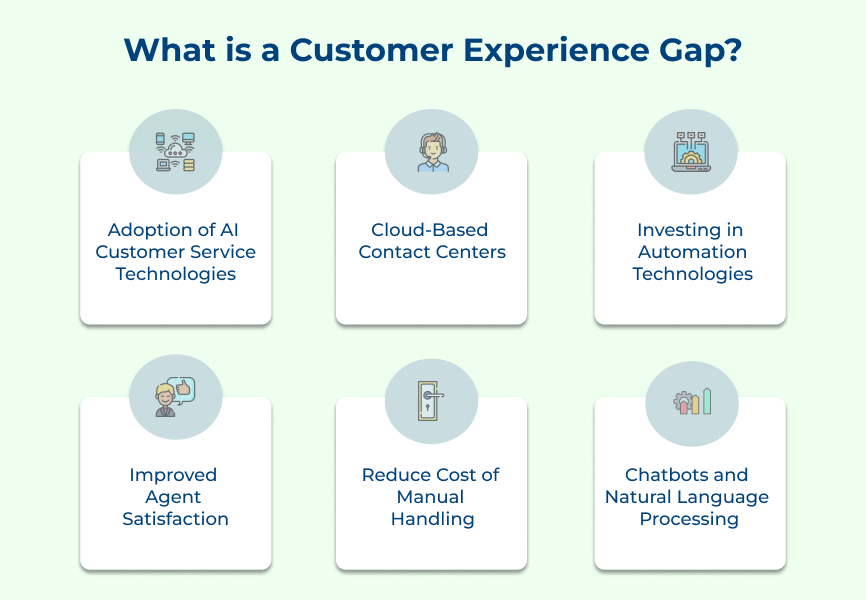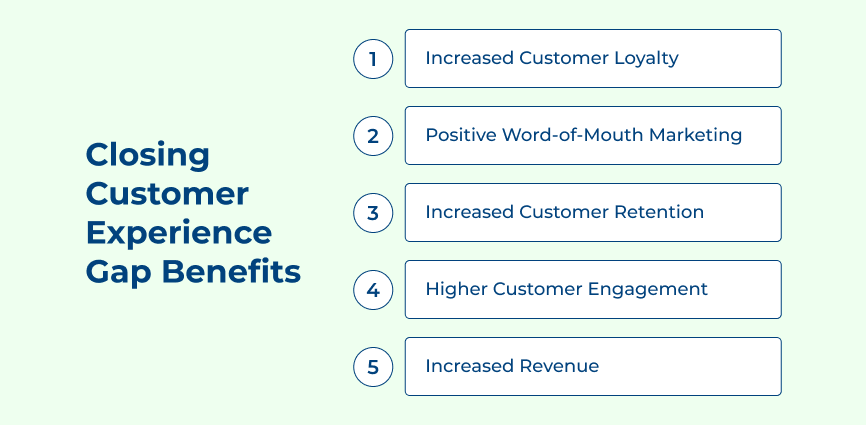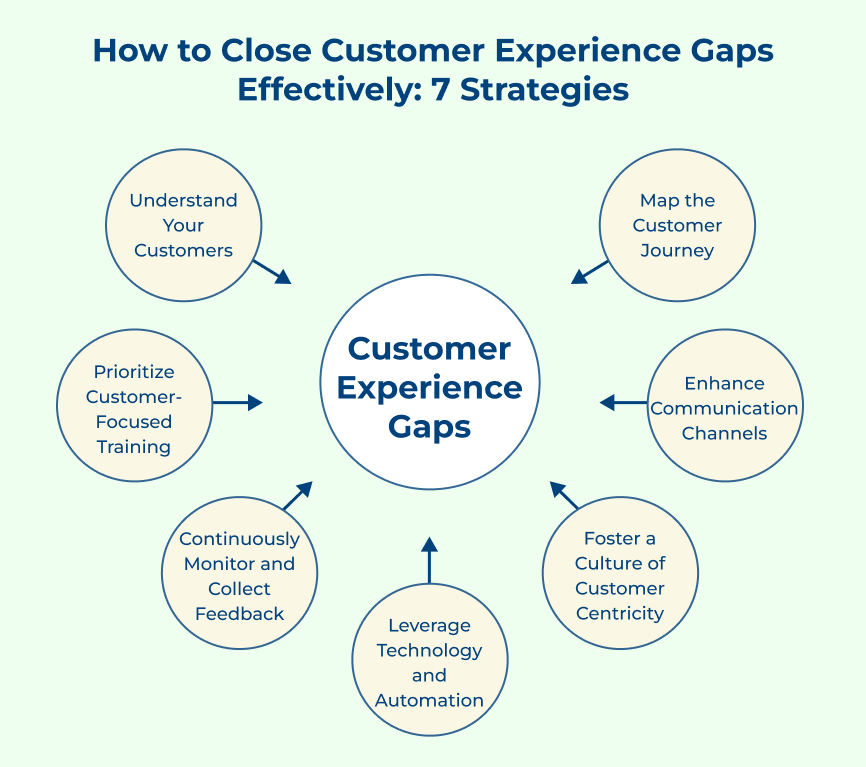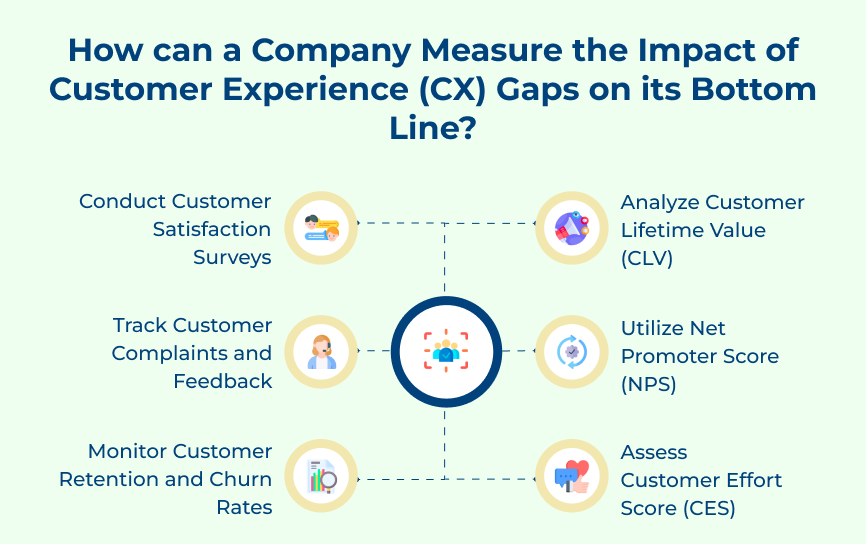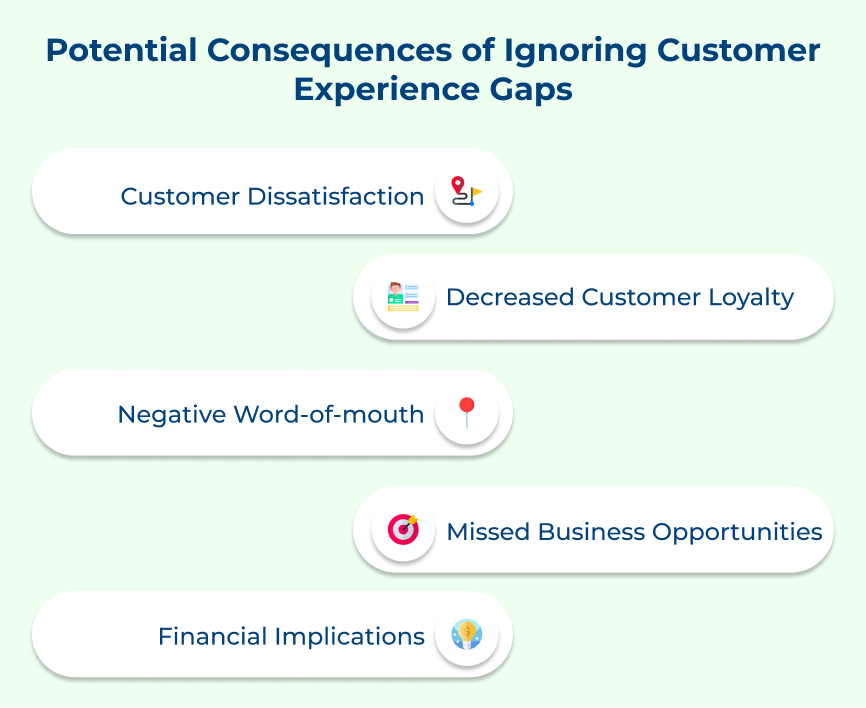1. Understand Your Customers
Understanding the customers is a crucial strategy for closing customer experience gaps effectively. Understanding the customers uncovers their needs, wants and pain points. The insights can be leveraged by businesses to tailor their solutions accordingly. It not only helps in providing a better customer experience but also boosts customer satisfaction.
One example of understanding the customers is conducting customer surveys or feedback forms to gather insights about their experiences. Analyzing the responses helps to identify areas where you may be falling short and take necessary actions to improve. Let’s say the customers consistently complain about slow response times from the customer support team, they can invest in training or hiring more agents to address this gap.
Actionable tips:
- Build customer personas: Create detailed profiles of the target customers based on their demographics, behaviors and motivations.
- Segment the customers: Dividing the customer base enables the tailoring of the marketing strategies and messaging to each specific segment.
- Engage with the customers: Actively engage with the customers through different channels such as social media, customer support and feedback forums.
2. Map the Customer Journey
Mapping the customer journey involves analyzing the entire experience, from their initial awareness of the brand to the final purchase and beyond. The need for mapping the customer journey arises from the fact that a seamless and satisfactory customer experience is essential for customer retention. Businesses can identify the CX gaps and proactively address them.
What exactly does mapping the customer journey do? It provides businesses with insights into the customer’s mindset, needs and expectations at each touchpoint. Companies can create a unified and consistent experience throughout their journey. It also enables businesses to align their marketing, sales and customer service efforts to better serve customers.
Actionable tips:
- Identify touchpoints: Determine all the stages and interactions a customer has with your brand, both online and offline.
- Develop strategies: Based on the insights gained, create strategies to bridge the identified gaps and enhance the customer experience.
- Continuously monitor and optimize: Regularly adjust the strategies based on customer feedback and changing market dynamics.
3. Prioritize Customer-Focused Training
Companies that prioritize customer satisfaction tend to outshine their competitors and enjoy long-term success. One effective strategy to close customer experience gaps is to prioritize customer-focused training. Investing in training programs centered around customer satisfaction allows businesses to bridge the gap between customer expectations and the experience delivered.
Let’s take a renowned telecommunications company that faced dissatisfaction among its customers due to poor service quality. They identified the need to prioritize customer-focused training to address issues such as long wait times, unhelpful representatives and ineffective problem resolution. Implementing comprehensive training programs gave their employees a better understanding of customer needs and made them better at problem-solving.
Actionable tips:
- Conduct regular training sessions: Regular training sessions ensure the employees stay up to date with the latest customer service techniques and best practices.
- Role-playing exercises: The exercises will allow employees to practice real-life customer scenarios and improve their skills.
- Cross-functional training: Encourage employees from different departments to engage in cross-functional training, enabling them to better understand the customer journey.
4. Enhance Communication Channels
Effective communication plays a vital role in ensuring a positive customer experience. Businesses must continuously enhance their communication channels to bridge any gaps that may exist. They can easily address customer concerns, provide timely assistance and build strong relationships by adopting a proactive approach to improving communication.
An example of enhancing communication channels is the implementation of omnichannel strategies. The approach integrates various communication channels to provide a seamless and consistent experience for customers. When a customer contacts a company through any channel, the customer service representative will have access to the customer’s complete interaction history.
Actionable tips:
- Multichannel approach: Offer multiple communication channels to cater to different customer preferences and demographics.
- Prompt response: Ensure quick and timely responses to customer inquiries to demonstrate attentiveness.
- Invest in technology: Ensure the employees are well-trained in utilizing the various communication channels and technologies employed.
5. Continuously Monitor and Collect Feedback
Continuous monitoring and collecting feedback from customers is a crucial strategy in closing customer experience gaps effectively. Companies must regularly gather feedback through various channels like surveys, interviews, customer reviews and social media listening. The ongoing process enables companies to stay up-to-date with any issues and identify areas where they excel.
Consider a clothing retailer that may send out post-purchase surveys to customers. They are focused on asking them about their shopping experience, satisfaction with the products and overall impression of the brand. The retailer can identify any gaps or shortcomings in their customer experience and take appropriate action by analyzing the feedback. Let’s say multiple customers mention difficulties with the website’s checkout process. The retailer can then prioritize fixing the issues to ensure a smoother and more enjoyable shopping experience.
Actionable tips:
- Implement customer feedback surveys: Conduct regular surveys to gather feedback on different aspects of the customer experience.
- Social media monitoring: Monitor social media platforms to track customer mentions, comments and reviews.
- Establish a feedback loop: Develop a system to close the loop with customers by acknowledging their feedback and providing prompt resolutions.
6. Facilitate a Culture of Customer Centricity
The need for a customer-centric culture stems from the evolving expectations of consumers. Customers are now willing to pay more for a better experience and are more likely to remain loyal to companies that prioritize their needs. A culture of customer-centricity places the customer at the heart of every decision and action within the organization.
The need is for a shift in mindset where employees at all levels understand the importance of customer satisfaction. Cultivating a customer-centric culture provides multifold benefits to businesses – increased customer loyalty, improved brand reputation, higher revenue and a competitive edge in the market.
Actionable tips:
- Leadership commitment: Senior executives need to lead by example and embody the values of customer centricity.
- Employee training: Provide training programs that emphasize the significance of customer satisfaction and equip employees with the skills to deliver exceptional experiences.
- Clear communication: Ensure the customer-centric goals and values are communicated effectively throughout the organization.
7. Leverage Technology and Automation
Companies can often face challenges in closing customer experience gaps due to increasing customer expectations and ever-evolving technologies. It is exactly where leveraging technology and automation has the potential to be a game-changer. The use of technology can streamline processes, improve efficiency and enhance customer interactions. The result would be a more seamless and satisfying customer experience.
For instance, chatbots have become increasingly popular in customer service. The automated systems can quickly provide customers with answers to frequently asked questions, offer personalized recommendations and even process transactions. Businesses can ensure immediate assistance and reduce customer frustration by having the chatbots available 24/7.
Actionable tips:
- Customer relationship management (CRM) systems: Implementing a CRM system allows businesses to effectively analyze customer data, track interactions and personalize their efforts.
- Chatbots and AI-powered customer service: AI-driven chatbots provide instant and 24/7 customer support, resolving issues efficiently.
- Self-service platforms: Self-service options like knowledge bases, FAQ sections and online portals empower customers to find solutions independently.
What Are the Customer Experience Gaps Across Different Industries?
Check out the various customer experience gaps across different industries, shedding light on what businesses can do to bridge these divides to facilitate lasting customer relationships.
1. Retail Industry
When it comes to the retail industry, there is often a gap in customer experience (CX) regarding the ease of browsing and purchasing products online versus in-store. Many customers find the online shopping experience is more streamlined, with features like search functionality, personalized recommendations and easy checkout options.
Users visiting a physical store may encounter long lines, disorganized layouts and limited product availability. Implement self-checkout kiosks, optimize inventory management systems to ensure product availability and use customer data to offer personalized recommendations.
2. Healthcare Industry
The customer experience gap here can be seen in the process of making appointments, receiving care and accessing medical information. Patients often face long wait times, difficulty scheduling appointments and a lack of communication between healthcare providers.
The online portals or apps used by healthcare organizations may be outdated or difficult to navigate, leading to frustration for patients. Improve scheduling efficiency to reduce wait times, simplify billing procedures and focus on compassionate care to enhance the patient experience.
3. Hospitality Industry
The hospitality industry’s customer experience gap can be evident in the booking process, check-in/out procedures and overall service quality. Customers may find it challenging to book a room or make reservations online, encounter issues with room preferences or special requests not being honored, or experience inconsistent service levels during their stay.
Communication between staff members and guests may be lacking, leading to misunderstandings or dissatisfaction. Train staff to prioritize customer satisfaction, implement technology and room key apps to streamline service. It will help to maintain consistent quality standards.
4. Financial Services Industry
The financial services industry’s customer experience gap can be observed in the complexity of solutions and the level of personalization offered to clients. Many customers find it overwhelming to navigate through a variety of financial products, understand terms and receive timely communication from their financial institutions.
The lack of personalized recommendations or tailored solutions can leave clients feeling undervalued and overlooked. Streamline account opening processes, be transparent about fees and offer personalized financial planning services to meet individual needs.
5. Technology Industry
The customer experience gap can arise from issues related to product usability, customer support and transparency. Customers may struggle to set up or use new technology products, and encounter difficulties when seeking assistance or troubleshooting issues. They may end up feeling left in the dark about product updates or changes.
The lack of responsive customer service or user-friendly interfaces can hinder the overall experience and lead to dissatisfaction among users. Provide timely customer support, focus on improving product usability through user testing and prioritize ongoing enhancements based on customer feedback.
How can a Company Measure the Impact of Customer Experience (CX) Gaps on its Bottom Line?
Explore the essential methods and metrics every company should consider to assess how CX gaps affect their financial performance, ensuring that every customer interaction contributes to their success.
